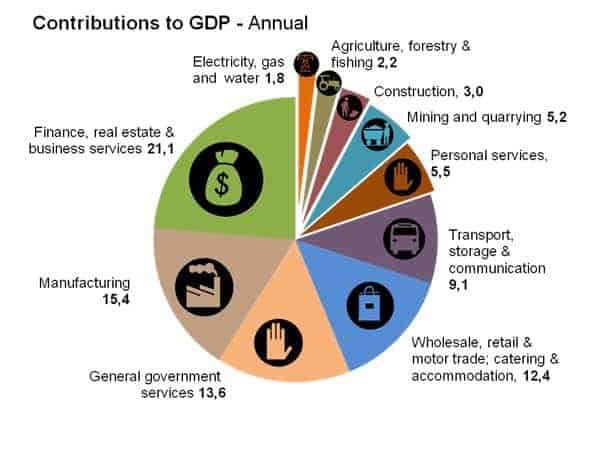Gross domestic product (GDP) is the market value of all final goods and services produced within a country in a given period of time.

Gross domestic product is often considered the best measure of how well the economy is performing.
The goal of GDP is to summarize in a single number the dollar value of economic activity in a given period of time. There are two ways to view this statistic.
One way to view GDP is as the total income of everyone in the economy. Another way to view GDP is as the total expenditure on the economy’s output of goods and services.
From either viewpoint, it is clear why GDP is a gauge of economic performance.
GDP measures something people care about—their incomes.
Similarly, an economy with a large output of goods and services can better satisfy the demands of households, firms, and the government.
How can GDP measure both the economy’s income and expenditure?
If you were to judge how a person is doing economically, you might first look at his or her income. A person with a high income can more easily afford life’s necessities and luxuries.
It is no surprise that people with higher incomes enjoy higher standards of living—better housing, better health care, fancier cars, more opulent vacations, and so on.
The same logic applies to a nation’s overall economy.
When judging whether the economy is doing well or poorly, it is natural to look at the total income that everyone in the economy is earning. That is the task of gross domestic product (GDP).
GDP measures two things at once.
The total income of everyone in the economy and the total expenditure on the economy’s output of goods and services.
The reason that GDP can perform the trick of measuring both total income and total expenditure is that these two things are really the same.
For an economy as a whole, income must equal expenditure.
Why is this true?
The reason that an economy’s income is the same as its expenditure is simply that every transaction has two parties: a buyer and a seller. Every dollar of spending by some buyer is a dollar of income for some seller.
Suppose, for instance, that Karen pays Doug $100 to mow her lawn. In this case, Doug is a seller of a service, and Karen is a buyer. Doug earns $100, and Karen spends $100.
Thus, the transaction contributes equally to the economy’s income and
To understand the meaning of GDP more fully, we turn to national income accounting, the accounting system used to measure GDP and many related statistics.
Other ways to measure the value of economic
GDP is not the only way to measure the size of an economy.
There are other ways to measure the size of an economy. We can also measure the size of the economy by calculating Gross national product(GNP), Net national product (NNP) or National Income.
Which we will discuss in upcoming lessons.
What does GDP per capita mean?
GDP per capita is a measure of a country’s total GDP divided by the total number of people in the country.
It divides the country’s gross domestic product by its total population. That makes it the best measurement of a country’s standard of living. It tells you how prosperous a country feels to each of its citizens.

To appreciate the significance of GDP.
Nations with a high level of GDP per person has a higher standard of living. Including better education to more televisions per household.
A large GDP does not ensure that every citizen of a country is happy. Yet, it may be the best recipe for happiness that macroeconomists have to offer.
